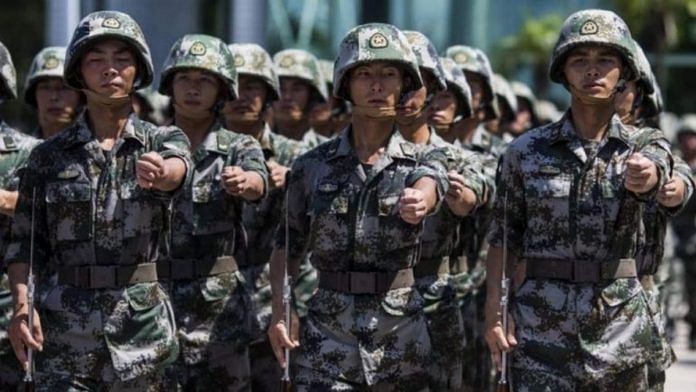New Delhi: China has withdrawn nearly 10,000 troops from depth areas on its side of the Line of Actual Control (LAC), over 100 kilometres from the southern banks of the Pangong Tso in eastern Ladakh, even as their frontline soldiers remain locked in a standoff with the Indian Army.
Sources in the defence and security establishment said the withdrawal has taken place over the past few weeks from the traditional training areas of China, which are over 100 kilometres from the LAC.
China is likely to have taken the step because of the extreme cold conditions in eastern Ladakh, where the temperatures have dropped into sub-zero territory.
The sources stressed that the move cannot be seen as de-escalation from the Chinese side. They pointed out that the frontline troops remain in place without any decrease in numbers.
Earlier, India had also carried out a thinning-down of troops by withdrawing soldiers who were rushed in as reserves when the standoff with China began early May. Meanwhile, India continues to maintain a considerable strength of troops in the area.
The steps were taken as part of the winter logistics arrangement. The troops are expected to be sent back to Ladakh during the summer.
Also Read: India has forced a stalemate in Ladakh. That’s a defeat for China
Cold takes a toll
Such is the weather in eastern Ladakh right now that the Pangong Tso has frozen over, as has the Galwan lake, which was the scene of a bloody clash between the two sides on 15 June.
While Indian troops have the experience of high-altitude deployment, it is the first time that Chinese soldiers have been deployed at such heights during the winter.
According to sources, India’s casualty figures due to the extreme cold in eastern Ladakh is within accepted norms, but the situation for the Chinese is more difficult as they are conducting frequent rotations of troops — much faster than is being done on the Indian side.
This, the sources said, meant Chinese soldiers are not being able to endure the extreme heights and winter.
Indian soldiers, meanwhile, are relying on a faster rotation of troops, along with round-the-clock medical support and standard operating procedures backed by years of experience of high-altitude deployment to remain fighting fit amid the cold winter.
India and China had initially deployed close to 50,000 troops each along the LAC when the tensions began.
Since then, a number of key decisions have been taken, including the creation of a separate artillery brigade for the Mountain Strike Corps, besides the dual-tasking of the Mathura-based 1 Corps, which was initially a Strike Corps aimed at Pakistan.
Also Read: How Indian Army’s secrecy & unorthodox deployment fooled the Chinese at Pangong Tso




Looks like the pro-China trolls are already crawling on all fours on this site — looks like The Print has hit paydirt. What kind of admins do you have here that they allow blatant trolls like this punk here!!
Hundreds Millions of Chinese has been used to living in -20deg winter at its northern part, but not for temperate India.
PLA West theatre has been in Tibet plateau for few years, with 50,000 troops long accustom to high altitude training. Their logistic support, medical and infrastructure is first class.
The reason of fast rotation is likely to minimize unnecessary casualties and injuries, which India has no such luxury of flat plateau rear support camp. So India will suffer more hypothermia & frostbite casualties.
As bitter winter has sealed most of India access route, there is zero ability for India to surge troops for attack. Hence there is no need for so many troops at the rear base for PLA to strain supply, although PLA has sprawling huge concrete buildings for comfortable winter living. If needs, they can return swiftly by railway.
IA has no such capability, so all poorly equipped 200,000 jawans living in tents must suffered in Leh throughout -40deg winter. When supply and fuel run low, it will be disastrous as this winter is forecasted to be coldest in 20yrs.